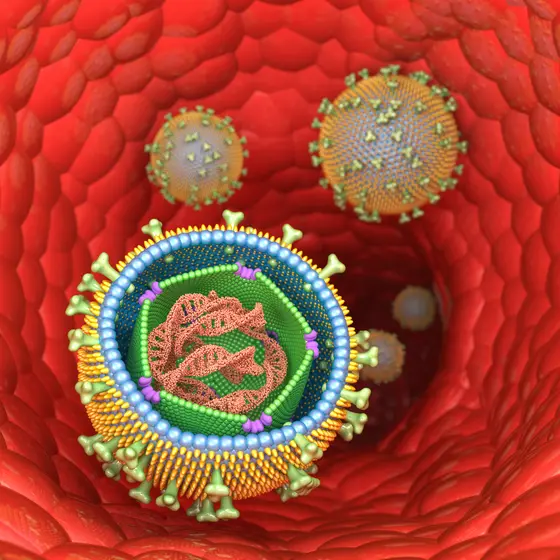More than 90 percent of all people become infected with the Epstein Barr virus (EBV) during their lifetime. The infection usually remains undetected throughout their life. However, the virus can also cause diseases – with regional differences: Glandular fever (infectious mononucleosis) primarily occurs in Europe and North America and normally affects adolescents or young adults. In equatorial Africa, Burkitt lymphoma is associated with EBV infection. And in Taiwan, southern China and Southeast Asia, the virus often causes nasopharyngeal carcinomas, cancers of the nose and throat area. This is one of the most common types of cancer in young adults in these countries.
“EBV-associated nasopharyngeal carcinoma is sometimes seen here too, but is significantly rarer than in Asia,“ commented Henri-Jacques Delecluse from DKFZ. So how does EBV cause completely different diseases in different parts of the world? “One possible explanation is that different types of virus are responsible,“ Delecluse explained. “And we have now found evidence of precisely that.“ The DKFZ researchers are publishing their results in the journal Nature Microbiology.
In the laboratory, Delecluse and his team studied a virus strain that had previously been isolated from a nasopharyngeal carcinoma. M81, as this particular type of virus is called, has certain peculiarities. Thus the researchers had previously already discovered that M81 infects not only the immune system's B cells, but also epithelial cells of the nasal mucous membrane very efficiently. In contrast, virus strains that cause glandular fever in Europe almost only infect B cells. And although the virus strains that are common here cause the infected B cells to multiply in a Petri dish, they do not produce any new virus particles, unlike M81.
As the DKFZ researchers discovered, one of the reasons for this different behavior is a genetic element called EBER2, of which there are many different variations. EBER2 is what is called a “non-coding RNA“ (ncRNA), in other words a piece of RNA that does not contain a blueprint for protein molecules. M81 has an EBER2 variant that is particularly often found in EBV strains from nasopharyngeal carcinomas.
To find out how this variant affects the behavior of the viruses, the DKFZ researchers used molecular biology tools to extract EBER2 from the M81 genome. “The virus was indeed no longer able to multiply in the infected cells,“ Delecluse noted. Even when an EBER2 element from a virus strain that is widespread in Europe was inserted into the M81 virus, it was no longer able to produce virus particles.
The researchers also discovered how EBER2 helps M81 multiply. “EBER2 from M81 stimulates the production of CXCL8, a cytokine that plays an important role in inflammation and carcinogenesis,“ Delecluse explained, adding that this was not only true of the infected cells themselves. “The EBER2 RNA is wrapped in little envelopes in the infected cell and transported to neighboring cells, which then also begin to produce CXCL8,“ he continued, explaining that this ultimately stimulated the virus to produce offspring.
“We have therefore finally found evidence that different types of virus can be responsible for different diseases,“ said Delecluse, emphasizing the significance of his results. “This finding is a strong argument for pressing on with vaccine research in order to develop protection against the most dangerous strains of EBV in future,“ he concluded. The vaccination against human papillomavirus (HPV), which can cause cervical cancer, already uses a similar principle.
Zhe Li, Ming-Han Tsai, Anatoliy Shumilov, Francesco Baccianti, Sai Wah Tsao, Remy Poirey, and Henri-Jacques Delecluse. A non-coding RNA from a carcinogenic virus induces an inflammatory response to promote virus production in infected cells.
Nature Microbiology 2019, DOI: 10.1038/s41564-019-0546-y



